Sandy and I have decided to take off August in regard to creating two new blogs for the month. We will switch our focus to finishing the second volume of the German occupation of Paris (Where Did They Put the Gestapo Headquarters?). We’re so close to wrapping up the new book that I am going to put blinders on and spend one hundred percent of my time trying to complete it.
In the meantime, we are “repurposing” two of our prior blogs for August. This blog was published in 2017 as The Sussex Plan and a Very Brave Woman (click here to read the original blog). Notice the change in title? I received an e-mail from a relative of Evelyn Clopet pointing out her contributions to the Sussex Plan, its mission, and her ultimate sacrifice. I promised Caroline that I would reprint the 2017 blog but on an expanded basis to include Evelyn. So, here it is.
Remember the “rabbit hole” I talked about in a past blog post? (click here to read the blog, Curious George Flees the Nazis) Well, I went down the rabbit hole for a week and popped back up with the relatively forgotten story of The Sussex Plan and its 120 brave agents. What initially grabbed my attention was the address in Paris of an established safe house used to shelter more than forty Sussex agents. The former cafe will be one of the stops in our third and final volume of Where Did They Put the Gestapo Headquarters? A Walking Tour of Nazi-Occupied Paris (1940−1944) Deportations & Liberation.
The stories, memories, and memorabilia of The Sussex Plan and its agents are kept alive by Dominique Soulier and the MM Park France Museum (twelve miles north of Strasbourg France). M. Soulier is the son of Georges Soulier, a former Sussex Plan agent. More on this later. Click here to visit the museum’s web-site.
Did You Know?
Did you know that I wrote a piece on Hedy Lamarr, the inventor responsible for wireless transmission technology? Well, I did, and you can read about her in the blog, He Led from the Front (click here to read the blog). Today, I am featuring other women inventors whom you probably have never heard about but likely very familiar with their inventions.
Margaret Wilcox (1838−?) ⏤ Car heater.
Elizabeth Magie (1866−1948) ⏤ Monopoly board game (Parker Brothers paid her $500).
Anna Connelly (1868−1969) ⏤ Fire escapes.
Dr. Mária Telkes (1900−1995) ⏤ Residential solar heating and thermal storage systems.
Letitia Mumford Geer (1852−1935) ⏤ Medical syringe.
Ada Lovelace (1815−1852) ⏤ The computer algorithm.
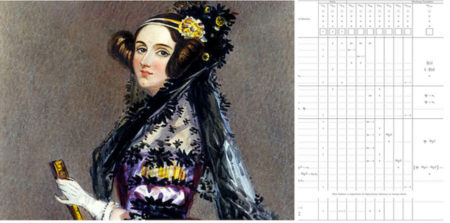
Dr. Shirley Ann Jackson (b. 1946) ⏤ Telecommunications technology.

Josephine Cochrane (1839−1913) ⏤ Dishwasher.
Marie van Brittan Brown (1922−1999) ⏤ Closed-circuit television security.
Margaret Knight (1838−1914) ⏤ The modern paper bag.
Alice Parker (1895−?) ⏤ Central heating.
Stephanie Kwolek (1923−2014) ⏤ Kevlar (i.e., bullet proof vests).

Dr. Grace Murray Hopper (1906−1992) ⏤ COBOL computer software.
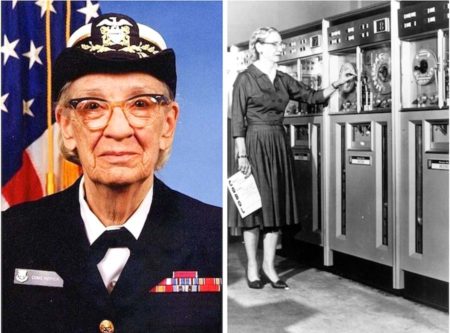
(Thank you to Martin B. for suggesting this topic.)
SOE and Resistance Efforts
By mid-1943 the Nazis had successfully infiltrated and crippled the efforts of the British-led Special Operations Executive (SOE) organization (click here to read the blog, Women Agents of the SOE) and their circuits in France and other occupied countries. The same fate could be said for some of the larger French resistance networks after their leaders were arrested, interrogated, and tortured. If these men and women survived the torture, they were either executed by the Gestapo, committed suicide, or deported under Hitler’s Nacht und Nebel decree (click here to read the blog, Night and Fog).
About this time, Allied leaders including Gen. Eisenhower and Prime Minister Churchill agreed upon an invasion of Europe for some time in 1944. To plan properly for the invasion, Eisenhower needed information on German troop movements and other surveillance facts, particularly in northern France. However, the SOE and its agents in France could not be counted on to accomplish what was needed. So, the British Secret Intelligence Service (SIS), or MI6, created a new organization called “The Sussex Plan” and its mission was to gather intelligence to assist in the planning of D-Day and its immediate aftermath.
Le Plan Sussex
Although devised by the British, the Sussex Plan was a joint effort by MI6, the American Office of Strategic Services (OSS), and Gen. de Gaulle’s Bureau Central de Renseignement et d’Action (BCRA). The responsibility for identifying qualified agents fell on the shoulders of Gilbert Renault (1904−1984), the renowned résistance leader whose nom de guerre was Colonel Rémy. It was decided that only French citizens would be recruited for the Sussex Plan, primarily because Rémy wanted agents who spoke fluent French.

Teams of two were to be dropped into France: one as the mission chief and the other as the radio operator. Rémy was opposed to “blind” drops and set up his own agents to act as “pathfinders” for the Sussex agents once on the ground. One of the pathfinders was a young woman named Jeannette Guyot. The Sussex Plan was to remain a secret and the agents were under orders not to contact any of the French résistants or their networks.
By October 1943, French volunteers began arriving in London and in January 1944, the first thirty-two agents began training. Three months later, 106 men and women were in training. The first three teams (“Berthier”, “Drolot”, and “Plainchant”) parachuted into France on 9 April. By the end of September 1944, all Sussex Plan teams were ordered to return to London. As they say, “Mission accomplished.”
Click here to watch The History of the Sussex Plan.
Jeannette Guyot
Virtually from the start of the German Occupation, Jeannette worked as a member of the French resistance movement. As a member of the Amarante network, she helped provide passage for people crossing the border between the Occupied and Free Zones in France.
Between 1942 and mid-1943, Jeannette worked as Colonel Rémy’s liaison officer helping to supply the BCRA with intelligence about the German’s activities in France. During this time, her network was compromised by betrayal and she moved from Paris to Lyon. Joining a local resistance network, Jeannette became known to the Gestapo and was put on their wanted list for arrest. Jeannette was pulled from France and flown to England.
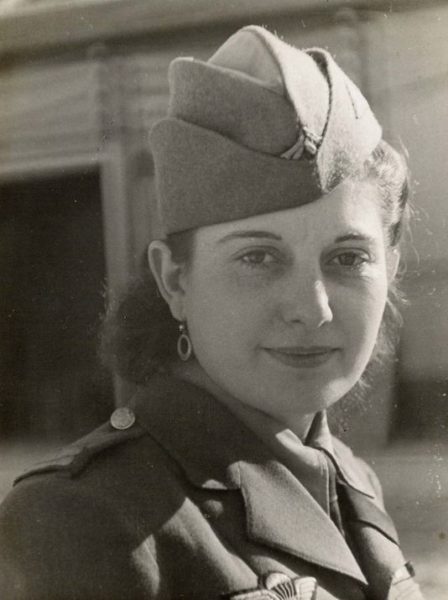
In London, Jeannette joined Gen. de Gaulle’s Free French Forces and was reunited with Rémy. In February 1944, Jeannette joined The Sussex Plan as a “pathfinder.” Her responsibilities for the 52 Sussex teams were to prepare safe houses, locate dropping sites for the agents to be parachuted into, and to receive and dispatch the agents once on the ground. Over time, Jeannette also reported on German activities as well as confirming arrests and executions of Sussex agents.
Jeannette’s cousin, Andrée Goubillon, owned the Café de l’Electricité located at 8, rue Tournefort in Paris. Jeannette convinced Mme Goubillon to use her café as a safe house. Despite its location near a Gestapo sub-station, dozens of Sussex agents were sheltered by Mme Goubillon. During a post-war reunion of former agents, they renamed the café to Café du Réseau Sussex (Sussex Network Café). After Mme Goubillon passed away in 1988, the bistro was transformed into a piano bar and finally closed and never reopened.
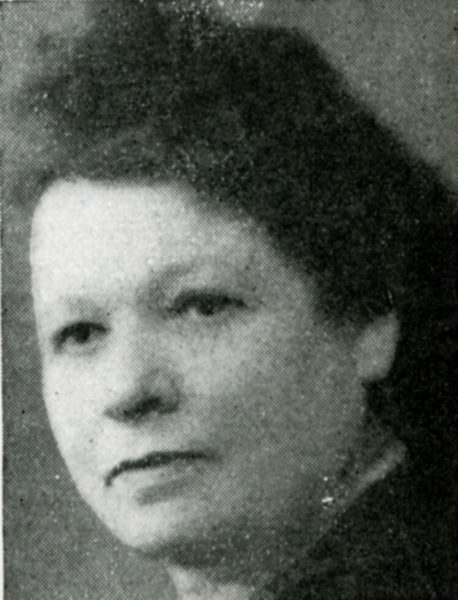
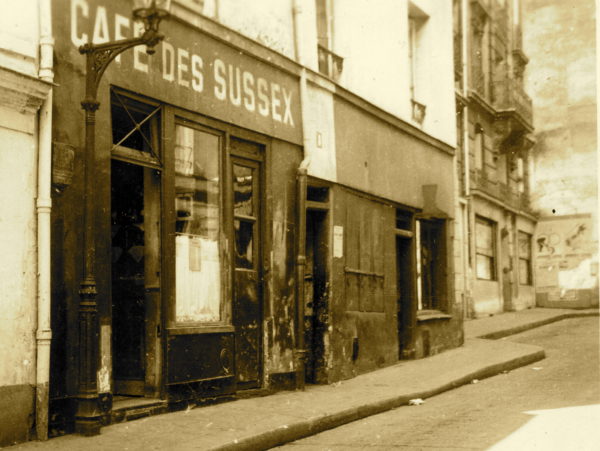
Most of the Sussex missions were successful. Capt. William Bechtel (nom de guerre: Louis Bonnet) recalled his “Berthier” mission in Rouen where he and his radio operator, Lt. Viarnaud, transmitted information about the position of the German 7th Army for the benefit of RAF bombers. The Sussex team at Evereux relayed information about Rommel’s movements from La Roche Guyon and within minutes, the RAF went to work. Sussex agents were also responsible for reporting on V1 rocket sites in Northern France. However, not all Sussex missions ended well.
Eighteen Sussex agents were captured during their missions. Fourteen never returned as eleven were executed and the other three were deported and never seen again. Four agents were deported but survived the war. Three teams, “Colère”, “Salaud”, and “Filan”, parachuted into France on 4 July 1944 to begin their intelligence gathering missions. Only one of the six agents survived.
Click here to read Jeannette’s obituary.
Evelyn Clopet
Evelyn Clopet (1922−1944) was the “Colère” mission radio operator. It was one month after the successful Allied landings on the Normandy beaches and the Germans were in retreat. The agents managed to get a van, drove toward Vendôme, and on 9 August came across some retreating German soldiers who stopped the Wehrmacht vehicle hoping to get a lift. The agents, all of whom could not speak German, were dressed as civilians and the soldiers demanded to see their identification papers. They were forced out of the van and in doing so, one of the suitcases hit the ground, broke open, and the wireless transmitter was exposed. Searching the agents, the Germans found their weapons. While enroute to Vendôme, one of the Sussex agents, André Rigot, managed to jump out of the moving van and escape. However, the other five were turned over to the local German police. Evelyne was brutally tortured that night but never broke. Eventually, the Germans loaded the five into a cart, took them off to a nearby road, and executed them with bursts from submachine guns. Evelyne and her four companions were buried in the Saint-Ouen cemetery.

Post War Honors
Lieutenant Jeannette Guyot took on dangerous assignments while serving in the French Resistance and after the war, she was only one of two women awarded the United States Army Distinguished Service Cross (during World War II). Only the Medal of Honor surpasses the Distinguished Service Cross.
Her other honors included the following:
- France: Chevalier of the Legion d’honneur
- France: Croix de guerre avec palmes
- France: Medal of the Resistance
- England: George Medal
Jeannette married another Sussex agent and retired to the countryside where she lived the remainder of her life. Like many former resistance members, Jeannette rarely spoke of her activities during the war. Prior to her passing in April 2016 at the age of 97, Jeannette gave the medals to her granddaughter.
Evelyne Clopet is honored with the memorial at the cemetery as well as the Tempsford Memorial in Bedfordshire. Evelyne’s hometown of Pornic named a street after her. Evelyne was recognized as “Mort pour la France” and the Americans awarded her the Silver Star and Purple Heart.

On a personal note, I am somewhat dumbfounded as to why, at the very least, France has not posthumously awarded Evelyn with the Legion d’honneur. In March 1945, the Controller Western Europe floated the idea of honoring three Frenchwomen who had worked with the Sussex teams: Jeannette, Andrée, and Marguerite Kiel. Evelyne Clopet’s name did not enter the discussion.
Collection Sussex 1944 – MM Park – 67610 La Wantzenau France
I would like to thank Dominique Soulier for the images I have posted in this blog and which I will use in our new book Where Did They Put the Gestapo Headquarters? A Walking Tour of Nazi Occupied Paris (1940–1944). I encourage you to visit the web sites for The Sussex Plan and MM Park and expand your knowledge of Dominique’s father and his very brave colleagues.
Click here to learn more about the Sussex Plan.
I would also recommend visiting the MM Park Museum. Sandy and I were there in 2022 and it was a fantastic experience. Our visit exceeded all of our expectations. The collection of war memorabilia is exceptional. Click here to visit the web-site.
Next Blog: “Something Must Be Done”
Correspondence and Commentary Policy
We welcome everyone to contact us either directly or through the individual blogs. Sandy and I review every piece of correspondence before it is approved to be published on the blog site. Our policy is to accept and publish comments that do not project hate, political, religious stances, or an attempt to solicit business (yeah, believe it or not, we do get that kind of stuff). Like many bloggers, we receive quite a bit of what is considered “Spam.” Those e-mails are immediately rejected without discussion.
Our blogs are written to inform our readers about history. We want to ensure discussions are kept within the boundary of historical facts and context without personal bias or prejudice.
We average about one e-mail every two days from our readers. We appreciate all communication because in many cases, it has led to friendships around the world.
★ Read and Learn More About Today’s Topic ★
Brown, Anthony Cave. The Secret War Report of the O.S.S. New York: Berkley Publishing, 1976.
Colonel Rémy. Mémoires d’un agent secret de la France libre. Paris: Éditions France-Empire, 1999. (French language)
Jeffery, Keith. MI6: The History of the Secret Intelligence Service 1909−1949. London: Bloomsbury, 2010.
Le Plan Sussex Click here to visit the web-site.
Soulier, Dominique. The Sussex Plan: Secret War in Occupied France 1943−1945. Paris: Histoire & Collections, 2013.
I could not find many books written about The Sussex Plan and its agents. Dominique Soulier has written the most complete account of the Sussex agents and history of the joint Allied operation. It is full of historical was well as contemporary images. Contributors include surviving members of The Sussex Plan as well as relatives of those agents no longer with us. It is a wonderful companion piece for your visit to the Sussex Plan exhibit within the MM Park France military museum located a short distance from Strasbourg, France.
Disclaimer:
There may be a chance that after we publish this particular blog, the video links associated with the blog are no longer accessible. We have no control over this. Many times, whoever posts the video has done so without the consent of the video’s owner. In some cases, it is likely that the content is deemed unsuitable by YouTube. We apologize if you have tried to access the link and you don’t get the expected results. Same goes for internet links.
What’s New With Sandy and Stew?
Sandy and I are working on finishing the second volume of Where Did They Put the Gestapo Headquarters? Roundups & Executions, 1940−1944.
Thanks to all of you who subscribe to our bi-weekly blogs. It seems there isn’t a day that goes by where we don’t increase our readership. Please let your history buff friends and family members know about our blog site and blogs.
Someone Is Commenting On Our Blogs
As I mentioned earlier, Caroline C. contacted me about Evelyne and her role as a Sussex agent. I admit that I missed that story the first time around. Through Caroline’s efforts to reach out to me, I am pleased to redeem myself with this expanded blog.
If there is a topic you’d like to see a blog written about, please don’t hesitate to contact me. I love hearing from you so keep those comments coming.
Do you enjoy reading? Do you have a hard time finding the right book in the genre you enjoy? Well, Ben at Shepherd.com has come up with an amazing way to find that book.
Shepherd highlights an author (like me) and one of their books (in our case, it is Where Did They Put the Gestapo Headquarters?). The author is required to review five books in the same genre. So, if a reader is interested say in cooking, they can drill down and find specific books about cooking that have been reviewed by authors in that category. Very simple.
If you like to read, I highly recommend you visit Shepherd.com. If you do, please let me know what you think and I will forward Ben any suggestions or comments you might have.
Click here to visit Shepherd’s website.
Click the books to visit Stew’s bookshelf.
Share This:
Follow Stew:

Find Stew’s books on Amazon and Apple Books.
Please note that we do not and will not take compensation from individuals or companies mentioned or promoted in the blogs.
 Walks Through History
Walks Through History
Copyright © 2023 Stew Ross

